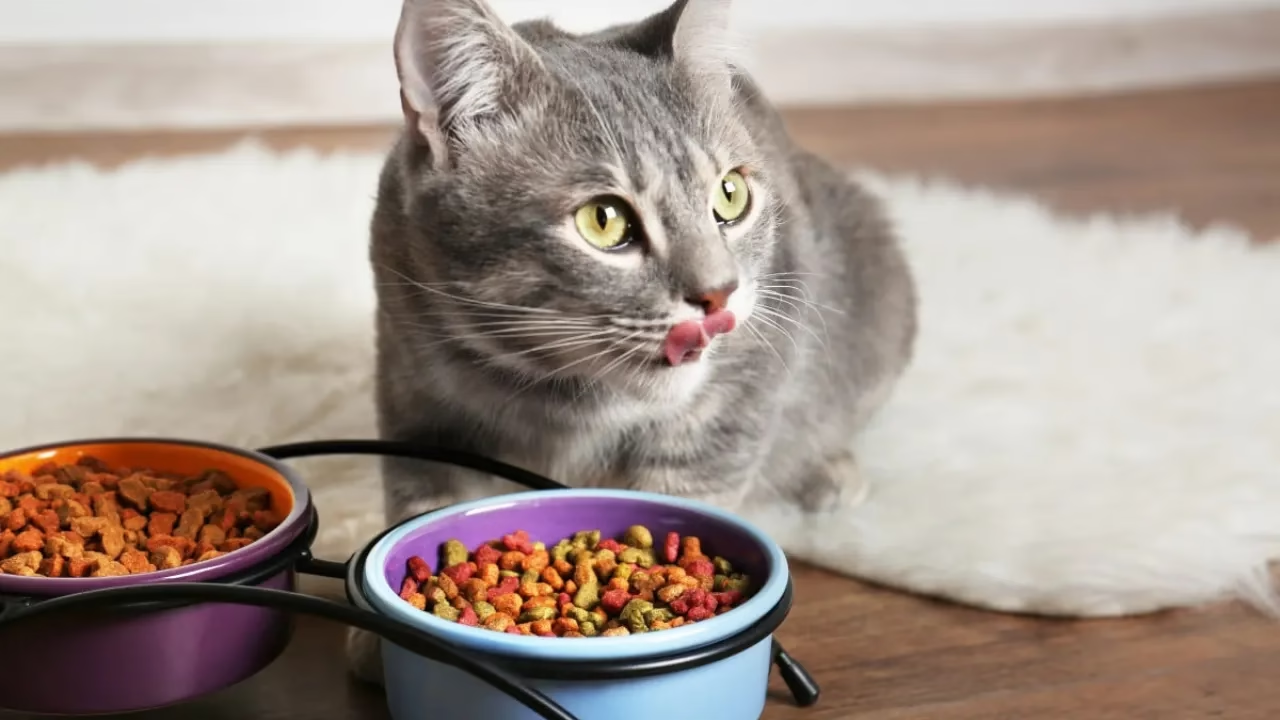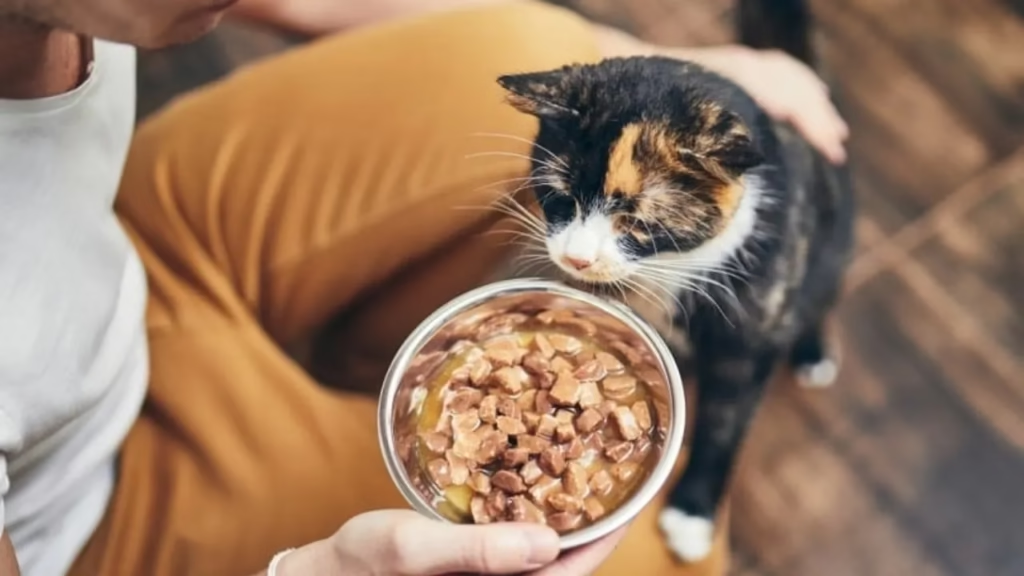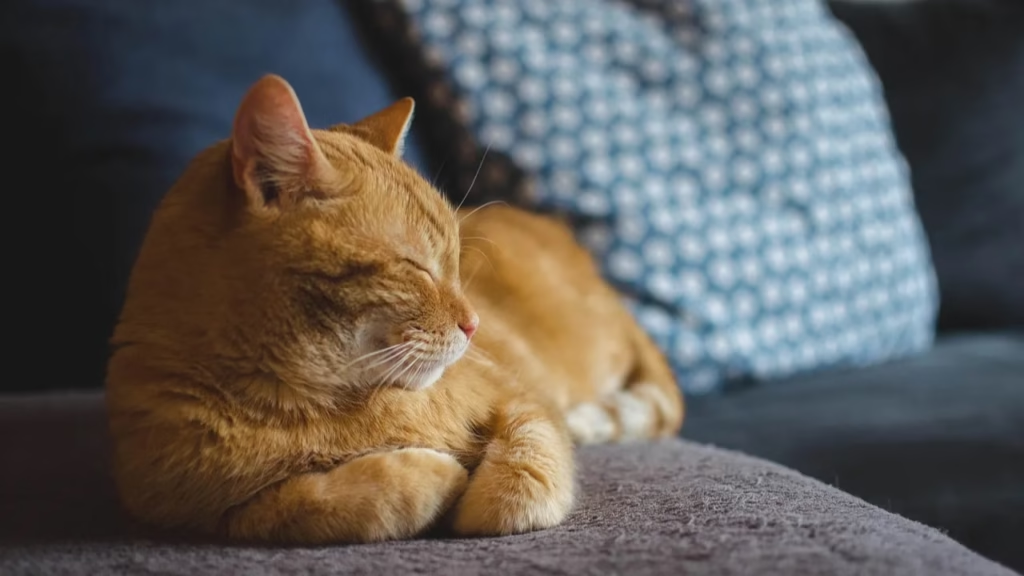Indoor cats are adored for their playful charm and snuggly companionship, but their low-activity lifestyle demands a specialized diet to stay healthy. In 2025, selecting the best cat food for indoor cats is key to preventing obesity, urinary issues, and hairballs. This guide covers the nutritional needs of indoor cats, top food brands with pros and cons, a feeding schedule, FAQs, and practical tips to keep your feline friend thriving. With a focus on food for indoor cats and optimal cat food choices, let’s ensure your kitty enjoys a vibrant, healthy life.
Nutritional Needs of Indoor Cats
Indoor cats burn fewer calories than outdoor cats, so their diet must prioritize weight control while delivering essential nutrients. High-quality protein, ideally 30-40% of the diet, from sources like chicken, fish, or turkey, supports lean muscle and a healthy metabolism. As obligate carnivores, cats rely on protein for energy and organ function.
Fats should comprise 15-20% of the diet, providing energy and promoting a shiny coat. Omega-3 and omega-6 fatty acids, often from fish oil, help reduce inflammation and support skin health, which is vital for indoor cats prone to allergies. To address urinary tract health—a common concern—foods with high moisture content and ingredients like cranberries are beneficial.
Carbohydrates should be limited, with fiber from sources like pumpkin or peas to aid digestion and reduce hairballs, a frequent issue for indoor cats. Essential nutrients, including taurine for heart and vision health, plus vitamins A, D, and minerals like calcium, ensure overall wellness. Kittens need about 200-300 calories daily, adults require roughly 20 calories per pound of body weight, and seniors need slightly less with added joint support. AAFCO-approved cat food guarantees a balanced diet, keeping your indoor cat in peak condition.
Top Cat Food Brands for Indoor Cats in 2025
The best food for indoor cats in 2025 focuses on high protein, controlled calories, and urinary health support. Here’s a curated list of top brands, with pros and cons based on expert insights and pet owner feedback, to help you choose the right cat food.
- Royal Canin Indoor Adult Dry Cat Food
Tailored for indoor cats aged 1-7 years, this formula features chicken meal, brown rice, and high fiber to minimize hairballs and support weight control. L-carnitine boosts fat metabolism.
Pros: Affordable, designed for indoor lifestyles, reduces litter box odor, and promotes dental health with kibble shape.
Cons: Includes grains, which may not suit cats with sensitivities; some cats may find it less appealing. - Blue Buffalo Indoor Health Chicken & Brown Rice
Made with deboned chicken, whole grains, and cranberries for urinary support, this dry food includes antioxidants and omega fatty acids for immunity and coat health.
Pros: Free of artificial additives, supports weight management, and includes nutrient-rich LifeSource Bits. Popular with fussy eaters.
Cons: Grain-inclusive; slightly more expensive than basic brands. - Smalls Fresh Cat Food (Human-Grade)
This subscription service delivers fresh, high-protein meals with ingredients like turkey or beef and veggies, customized for your cat. High moisture content aids urinary health.
Pros: Personalized portions, no fillers, and high moisture for hydration. Reduces digestive issues and enhances coat shine.
Cons: Costly ($5-10/day); requires freezer space and a subscription commitment. - Hill’s Science Diet Adult Indoor Cat Food
Featuring chicken, fiber, and natural ingredients, this formula supports weight control and hairball prevention. Antioxidants boost immune health.
Pros: Vet-endorsed, calorie-controlled, and widely available. Promotes urinary health and easy digestion.
Cons: Not grain-free; some cats may need wet food for additional hydration. - Wellness Core Grain-Free Indoor Formula
High-protein (38%) dry food with turkey, chicken, and peas, designed for lean muscle and weight management. Includes probiotics and omega fatty acids.
Pros: Grain-free for sensitive cats, low magnesium for urinary health, and highly palatable. No artificial ingredients.
Cons: Premium price; requires slow transition to avoid digestive upset. - Tiki Cat After Dark Wet Food
A grain-free wet food with real chicken, liver, and gizzards in broth, offering high protein and moisture to mimic a natural diet.
Pros: Ideal for hydration and urinary health; meaty texture appeals to picky eaters. Low-carb and filler-free.
Cons: Strong odor; more expensive per serving than dry food.
These brands excel in providing top-quality cat food for indoor cats, addressing their specific health needs.
Feeding Guide for Indoor Cats (Age-Wise)
A structured feeding routine is essential to prevent obesity in indoor cats. Adjust portions based on your cat’s weight and activity level, and consult your vet for tailored advice. Most adult indoor cats weigh 8-12 pounds.
- Kittens (8-12 Weeks): Feed 3-4 small meals daily, about 1/4 to 1/2 cup of kitten formula (dry or wet) per meal. High-protein, calorie-dense food supports growth.
- Kittens (3-6 Months): Maintain 3 meals, totaling 3/4 to 1 cup daily. Prioritize protein and DHA for brain and eye development.
- Adolescents (6-12 Months): Transition to 2-3 meals, about 1/2 to 3/4 cup daily. Monitor weight to prevent early weight gain.
- Adults (1-7 Years): Two meals daily, 1/3 to 1/2 cup dry or 3-5 oz wet food per meal (about 200-250 calories total). Wet food supports hydration.
- Seniors (8+ Years): Two meals, slightly less (1/4 to 1/3 cup dry or 3-4 oz wet). Opt for senior formulas with joint support and digestible ingredients.
Avoid free-feeding to control calorie intake. Ensure fresh water is always available, and transition new foods gradually over 7-10 days.
FAQs About Food for Indoor Cats
Here are answers to common questions about the best cat food for indoor cats, perfect for pet lovers seeking clarity.
- How much food does my indoor cat need?
Adults require about 20 calories per pound of body weight daily—roughly 1/3 to 1/2 cup dry or 3-5 oz wet food, split into two meals. - Is wet or dry food better for indoor cats?
Wet food promotes hydration and urinary health, while dry food supports dental health. A combination often works best—check with your vet. - How do I keep my indoor cat from gaining weight?
Measure portions, avoid free-feeding, and encourage activity with toys like feather wands. Choose low-calorie indoor formulas. - Are grain-free foods necessary for indoor cats?
Only if your cat has grain allergies. Otherwise, grains like rice add fiber. Consult a vet to confirm sensitivities. - Can indoor cats eat human food?
Small amounts of plain, cooked meat or veggies are fine as treats (10% of diet). Avoid toxic foods like garlic, onions, or chocolate.
Conclusion: Actionable Tips for a Healthy Indoor Cat Diet
Selecting the best cat food for indoor cats in 2025 is about prioritizing high-protein, low-calorie options that support urinary health and weight management. Brands like Royal Canin, Smalls, or Tiki Cat offer excellent choices to keep your feline friend healthy and happy. With the right food for indoor cats, you can ensure a long, vibrant life for your pet.
Actionable tips: Monitor your cat’s weight monthly; combine wet and dry food for hydration and dental benefits; use interactive feeders to slow eating and add mental stimulation; schedule yearly vet visits to tweak the diet; and keep treats to 10% of daily calories. Start with a sample of a top brand today—your cat will thank you with extra purrs!


